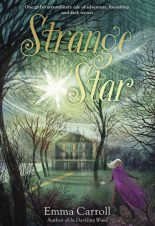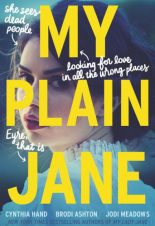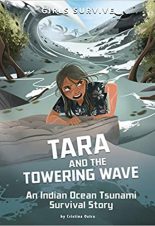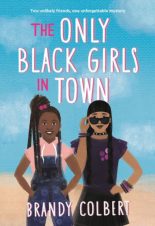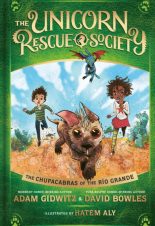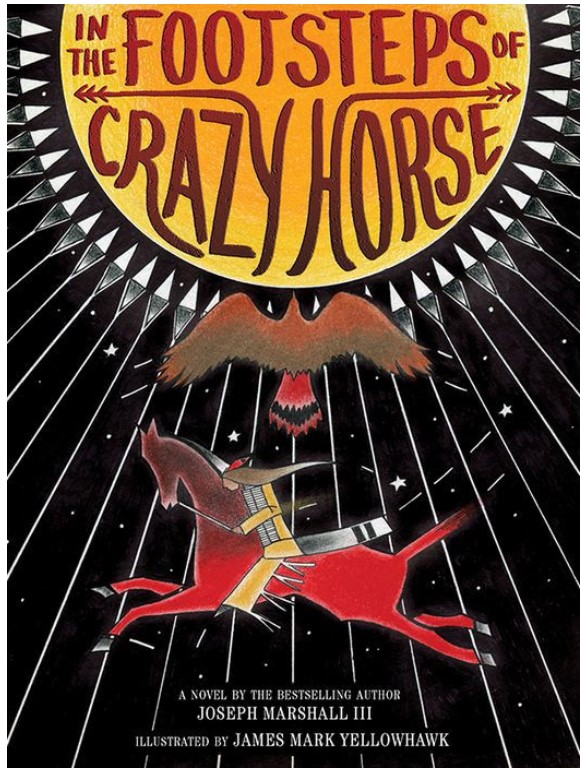
Buy This Book
Crazy Horse “was a good man, too. He was quiet and humble. He didn’t brag. He didn’t even speak loudly,” Grandpa Nyles. –In the Footsteps of Crazy Horse
In the Footsteps of Crazy Horse
by Joseph Marshall III
AR Test
10+
Score
4.7
176
Jimmy McClean is a Lakota boy, though you wouldn’t guess it by his name. His mother is Lakota; his father is half white and half Lakota. Over summer break, Jimmy embarks on a journey with his grandfather, Nyles High Eagle. While on the road, his grandfather tells him the story of Crazy Horse, one of the most important figures in Lakota and American history. Through his grandfather’s tales about the famous warrior, Jimmy learns about his Lakota heritage and, ultimately, himself.
Expertly intertwining fiction and non-fiction, author Marshall chronicles the many heroic deeds of Crazy Horse. Crazy Horse took up arms against the U.S. government. He fiercely fought against encroachments on the Lakota’s territories and to save the Lakota’s way of life. Crazy Horse led a war party to victory at the Battle of the Greasy Grass (the Battle of Little Big Horn), and he played a major and dangerous role as a decoy at the Battle of the Hundred in the Hands (the Fetterman Battle). Alongside Sitting Bull, Crazy Horse was the last of the Lakota to surrender his people to the U.S. Army.
By drawing references and inspiration from the oral stories of the Lakota tradition, Marshall gives readers an inside perspective of the life of Tasunke Witko, better known as Crazy Horse. Jimmy and his grandfather follow in the footsteps of Crazy Horse, which allows Jimmy to better understand his heritage and to learn lessons from Crazy Horse’s life. For instance, Crazy Horse conveys the importance of generosity when he uses his hunting skills to “take care of the helpless ones.” Crazy Horse didn’t help others “because he wanted people to notice. He didn’t even want people to thank him. He just didn’t want anyone to go hungry.”
When Crazy Horse’s best friend and his daughter died, Crazy Horse wasn’t afraid to show his grief. Crazy Horse openly cried, and his tears demonstrate that “even tough guys cry.” Many times, Crazy Horse proves his bravery when he puts his life on the line to help others. The Lakota believed that “courage was a warrior’s best weapon, and that it was the highest honor to give your life for your people. . . That’s what being a warrior was all about: facing the scary things no matter how afraid you were. That’s what courage is. And what’s more, it doesn’t only happen on the battlefield. You can have courage and face the tough things that happen to you anywhere.”
While many warriors wanted to continue fighting the U.S. army, Crazy Horse ultimately surrendered for the tribe’s well-being. “He did it for the helpless ones, the old people, the women, and the children.” Surrendering was courageous because it meant acknowledging defeat and giving up his people’s freedom. In the end, Crazy Horse’s decisions emphasize the importance of bravery, generosity, and putting others’ needs first.
Most of In the Footsteps of Crazy Horse focuses on Crazy Horse’s life. Since the story is being told to Jimmy by his grandfather, this allows Jimmy to ask questions and connect Crazy Horse’s experiences to his own life. In the Footsteps of Crazy Horse is an engaging story that teaches the importance of storytelling and remembering the past. The story allows readers to see history from the Lakota’s point of view and examines the reasons that Crazy Horse fought to keep his people free. To learn more about Native American’s culture and their unique struggles, you can also read Rez Dogs by Joseph Bruchac.
Sexual Content
- None
Violence
- The Lakota called the American soldiers Long Knives. “Long Knives were known to attack any Lakota—man, woman, or child. They were mean people—if they were people at all.”
- When Light Hair [Crazy Horse] was a boy, his village was attacked and set on fire. “The ground was scorch black where the flames had passed. Every buffalo-hide lodge was burning or had already been turned into a pile of ash. . . Light Hair saw that the bundles on the ground were people.” As Light Hair walked through the village, he saw many bodies. “Some of the bodies were small children.”
- After the attack, Light Hair finds a woman hiding. She says, “They shot people. My husband is . . . He’s gone. . . So is my baby.” The Long Knives took some of the people captive. The battle is described over four pages.
- A cow wanders into the Lakota’s village and is “butchered and the meat given away to old people.” Soon, soldiers appear, wanting the cow. The Lakota offered payment, but the man wanted his cow. Soon, Long Knives had gathered at the village. A soldier “demanded that the man who had killed the cow be brought to him.”
- When the Lakota can’t turn over the cow, a soldier fires a cannon into the village. “Conquering Bear was one of the first to fall, severely wounded. The waiting warriors attacked, charging the Long Knives. . . Many soldiers fell, and some ran away. Those fleeing were chased and cut down.”
- When the Long Knives were away from the fort, the warriors attacked. “Crazy Horse could hear the screams and shouts of the soldiers. Frightened horses were screaming too. . . Many of the soldiers were running, crowding together in the narrowest part of the ridge, and warriors on both slopes were firing arrows at them.” The soldiers tried to hide “but many had already fallen, struck down by bullets and arrows.”
- The warriors flanked the soldiers. “At a signal from Crazy Horse, the flanking warriors charged the remaining soldiers. Crazy Horse struck down with his war club.” Eighty soldiers were killed, and “some say forty warriors were killed.”
- During the fight, Crazy Horse’s best friend, Lone Bear, was killed. “Lone Bear had been shot through the chest. But it was so cold, the blood froze around the wound and stopped the bleeding.” Crazy Horse “held his friend in his arms until he died.”
- A Cheyenne woman dressed like a man and followed the warriors into battle. “When her brother’s horse was shot down, she raced in to rescue him. Soldiers were shooting at her from two sides, but she still managed to save him.”
- During a battle, “firing from the soldiers and the [enemy] warriors was constant. Every moment was filled with the sound of gunshots.” Some soldiers tried to take cover, but the Lakota “fired guns and bows and started fires.” The soldiers tried to cross the river, but “soldiers were falling, hit by bullets and arrows.” The scene is described over six pages.
- Later that day, the warriors attacked the soldiers who made a barricade. “Custer’s soldiers, his five companies, began to suffer casualties. That is, soldiers were being hit by bullets and falling. . . The sad fact is that Custer lost all his men, including himself. Every man in the five companies he led was killed in this second part of the battle.” The second part of the battle is described over three pages.
- After a battle, people from the Lakota village sought their loved ones. “Many of them were angry at the Long Knives . . . Then someone took a knife and cut a soldier’s body. All that anger was hard to hold back. So they began stripping bodies, taking things, and then mutilating them. . . Cutting arms and legs.” Grandpa Nyles says, “I personally think it’s a bad thing no matter who does it. But that’s the way it was then.”
- Soldiers and jealous warriors tried to capture Crazy Horse to imprison him. “When the Indian policemen saw [Crazy Horse’s] knife, they surrounded him. [An Indian leader] Little Big Man grabbed his arms from behind.” A soldier came and saw “a Lakota fighting with the Indian policemen, so he thrust his rifle with a long bayonet on the end of the barrel, at Crazy Horse.” The wound killed Crazy Horse.
Drugs and Alcohol
- None
Language
- None
Supernatural
- None
Spiritual Content
- None
Crazy Horse “was a good man, too. He was quiet and humble. He didn’t brag. He didn’t even speak loudly,” Grandpa Nyles. –In the Footsteps of Crazy Horse
Latest Reviews
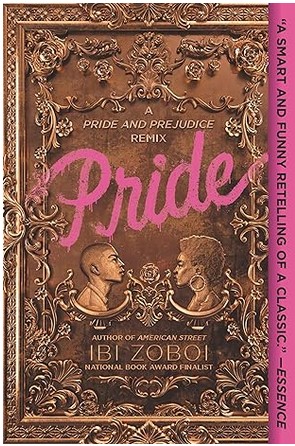
Pride: A Pride & Prejudice Remix

Thieves’ Gambit #1
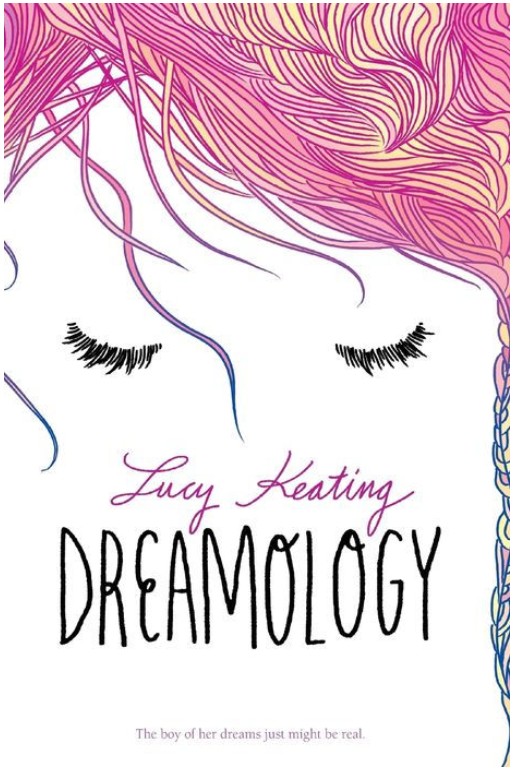
Dreamology
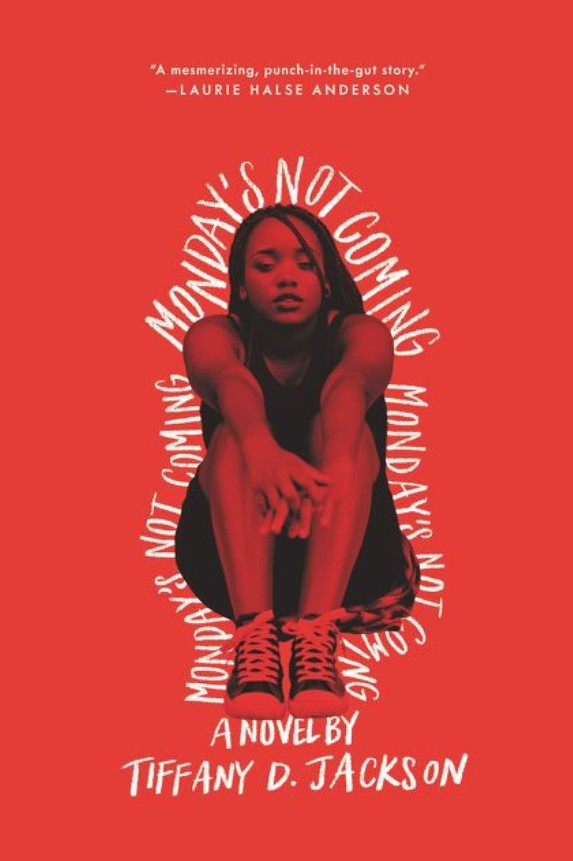
Monday’s Not Coming
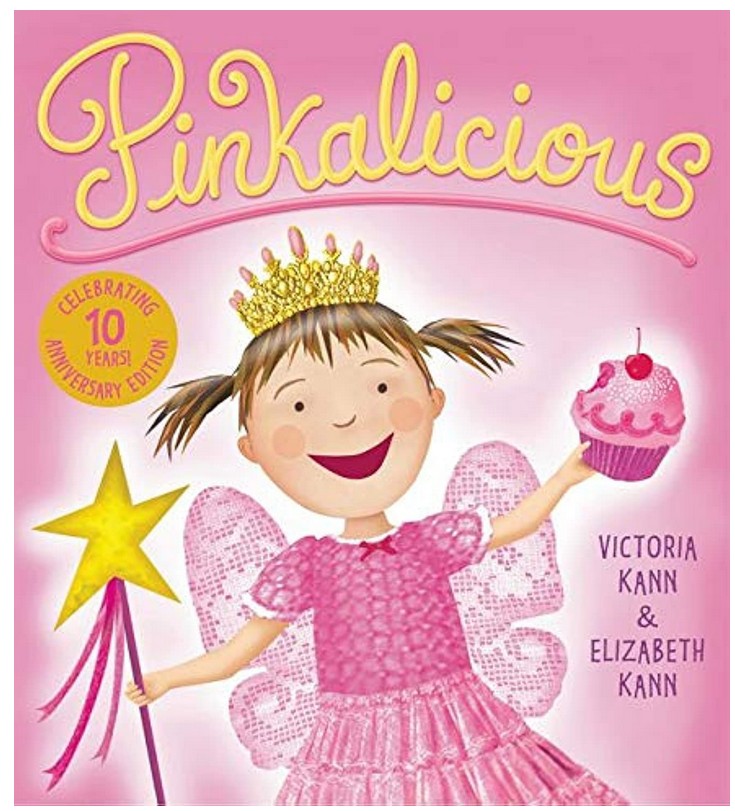
Pinkalicious
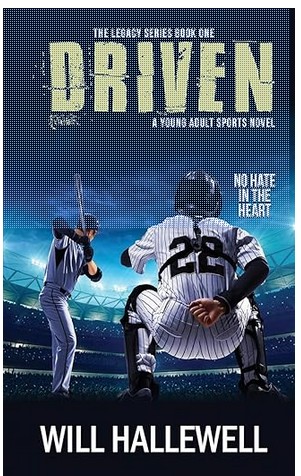
Driven

Goodbye Days

Blood of Troy

Will’s Race for Home

